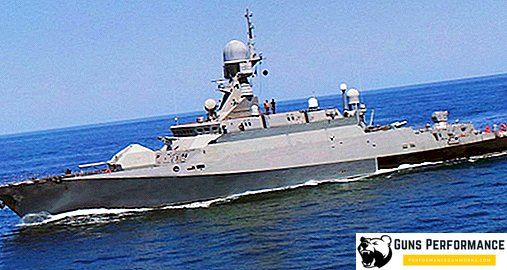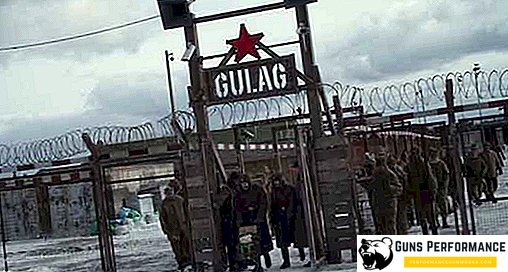In Iceland, as in most Scandinavian countries, the president does not have absolute power. Its functions are to govern the state along with other branches of government, which is spelled out in the 1944 constitution. Legislative power in Iceland is exercised by the president and Alting, who have a great deal of weight in the internal politics of the state. Now the post of the President of Iceland is Gvjudni Torlasius Jouhannesson, who was elected on June 25, 2016. He previously taught at the University of Iceland.
Ancient Iceland as an independent state

The history of Iceland is closely connected with the campaigns of the Vikings, gradually mastering the island. On the mainland for them there was not enough living space. Mass migration of Scandinavians to Iceland and Greenland is one of the last stages of the Great Migration. Settlement of the northern islands is considered the first phase of European colonization, which was continued in a later period, with the capture of:
- Greenland;
- America;
- Australia
Iceland was uninhabited, the first white settlers were able to select the best land suitable for animal husbandry and agriculture.
The first Scandinavians appeared in Iceland around 873-931. The main goals and objectives of the Swedes and Norwegians was the development of new lands, since in their homeland all the fertile land plots had long been divided among themselves know and bonds. An interesting fact is that among the colonialists there were often representatives of Celtic tribes living in the modern territories of Ireland and Scotland. In the year 930, an Allting is created in Iceland, characterized by the following features:
- It was the first democratic governing body, reminiscent of the modern parliament;
- He had a judicial function and carried out his work on the basis of customary law;
- Decisions and decrees of the Scandinavian "parliament" were binding, but this body did not have any coercive mechanisms.
Most often, the guilty were simply excluded from the community, which was a death sentence for a medieval man. Laws did not apply to an exiled congregator, he could have been killed or taken into slavery by anyone without fear of being punished.
Closer to the year 950 in Iceland formed groups consisting of yarlov with his warriors. They could afford not to pay attention to the decisions of the Alting, because they lived in their communities along with their wives, children and household. Soon between them, armed clashes began, which grew into real feudal wars. Perhaps, after several years of strife in Iceland, there would be one strong feudal lord who united the small principalities into one state. But a series of events occurred, because of which the country lost its independence for a long time:
- In 1262, Iceland was conquered by the Norwegians, although it formally remained a Norwegian colony;
- A few centuries later, Norway became a province of Denmark;
- In 1537, Iceland officially became subordinate to Denmark.
The further development of the island state for many centuries was associated with Denmark.
Iceland in Denmark and adopted reforms

The patronage of Denmark over Iceland did not bring the local population anything but problems:
- The Danes immediately secured the rights to all the minerals of the island;
- Icelandic waters were declared the property of Denmark;
- Locals could only trade with Denmark;
- The entire population of the island was taxed with huge taxes.
Although fishing has always played a major role in the life of Iceland, the new rulers diligently developed agriculture, because it was easier to collect taxes from farmers and livestock breeders.
At the beginning of the 14th century, a small ice age began, which seriously disrupted the country's economy. Icelandic colonies located in Greenland, completely died, unable to adapt to new climatic conditions. The inhabitants of Iceland had to switch to fishing, agriculture could not provide people with the necessary amount of food.
The island was far enough from Denmark, local fishermen gradually established trade with other European powers:
- With England in 1412. Their vessels for the species were fishing in the area, and in fact were engaged in buying up catches from local fishermen;
- With the Dutch in 1419. They demanded permission from the Danish king to trade with Iceland, threatening that they would do it anyway;
- Basque whalers have taught locals whale fishing;
- The Hanseatic League often sent its merchant ships to Iceland.
Pirates of North Africa often swam in these waters. In 1627, they plundered the coast of the island, capturing about 500 local residents. According to the data preserved by historians, most of them were sold on the Mediterranean slave markets.
Although Iceland was a colony of Denmark, Althing continued to operate in the country. At the end of the XVIII - the beginning of the XIX century, he ceased his work, becoming a completely useless authority that does not affect the political situation in the country. At the same time, a movement aimed at obtaining autonomous rights began to emerge in Iceland and, ideally, to be completely independent of Denmark. The first widely known event on the way to independence is considered to be the trick of Jørgen Jørgensen, who decided to declare himself king of Iceland. The official election of Jørgenseng did not happen, the British took him from the island, he was a subject of the British crown.
In the middle of the XIX century, Icelanders began to systematically go to the goal of gaining independence from Denmark:
- In 1840, an unsuccessful attempt was made to revive the Althing;
- In 1874, the Icelandic Constitution appeared;
- In 1918, the country became an official member of the union with Denmark;
- In 1920, Icelanders adopted a new constitution.
After World War I, the country received long-awaited autonomy, although it was still far from complete independence.
Iceland in the XX-XXI centuries and the rapid economic growth in the region

After the outbreak of World War II, the territory of Iceland became a strategic point for the warring parties. Hitler's Germany tried to seize the island: it was a convenient place to deploy the bases of the Navy. At first British troops appeared here, they soon gave way to the army of the United States of America. In 1943, the union between Iceland and Denmark expired, which was not extended further. In 1944, a national referendum was held in the country, declaring Iceland an independent republic.
The Icelandic economy received a new impetus for development: huge amounts of money were invested in the modernization of the fishing and processing industries. At the expense of a small amount of population, the state was quickly enriched. Iceland was and is the minimum level of corruption, the country has a deep legacy of European business culture. A huge role was played by military and post-war investments in the country's economy. The government took a course on the Scandinavian model and built a "welfare state".
In 1949, Iceland entered NATO. Now the country's relations with NATO and the European Union are extremely interesting. On the one hand, the authorities fully support these organizations in all aspects of obtaining privileges. On the other hand, Iceland has its position on issues affecting its national interests.
How to become president of Iceland and whether to strive for this

The state is governed by the president and government structures, which is clearly spelled out in the second article of the constitution of the republic. Citizens who want to run for the presidential election must meet certain parameters:
- To reach the age of 35 years and above;
- Collect voter signatures in the amount of from 1,500 to 3,000;
- To be a citizen of the country.
The head of state is elected by popular direct and secret ballot. His term of office is 4 years, and the same person can be elected for two or more terms in a row. Presidential orders are not legislative acts, but real power belongs to Alting.
The power of the President of Iceland is small, it can be judged by one incident. In 2000, none of the citizens of the country put forward their candidacy for the presidential election, so the Althing extended the powers of the current head of state for another term. In 2004, regular elections were held, but turnout was only 67% of the country's citizens, which is very small by Iceland’s standards.
Status and Responsibilities of the President of Iceland

The Scandinavian model of the state does not imply the unlimited power of the president, the leader of Iceland has many rights and obligations:
- He cannot hold the highest state office and at the same time be a member of the Althing;
- The president does not receive rewards from any state or private enterprise;
- During the inauguration, the head of Iceland takes the oath or makes a formal statement that he undertakes to abide by the constitution. This act is made in two copies, one of which is stored in the archive, and the second is transmitted to the Alting;
- All official actions of the president are held with the consent of the parliament, so the head of state is not personally responsible for his actions. This applies not only to the current president, but also to the person who temporarily performs his duties. Criminal prosecution of the leader of Iceland is carried out only after obtaining the consent of the Althing;
- The president may leave his post ahead of time with the approval of the plebiscite. However, this process is carried out only after a resolution approved by no less than 75% of the Althing. Plebiscite takes place within two months after the decision of parliament, before it starts, the current president has no right to exercise his powers. If the referendum rejects the resolution, the Allting is dissolved, new elections are held;
- The president appoints ministers and accepts their resignation. An interesting feature of Icelandic legislation is the fact that it is the head of state who determines the necessary number of ministers and their responsibilities;
- The President concludes treaties with foreign countries. But all laws on the territorial integrity of the state or its waters, the establishment of a servitude, as well as changes to the state system, must be approved by the Althing;
- After the election of a new president, he necessarily convenes Alting. This should happen no later than 10 weeks after the election;
- The head of state is obliged to open Alting sessions annually. If necessary, you can convene an extraordinary session. If the majority of the members of the Althing vote “for”, then the president convenes an emergency meeting;
- Most laws are adopted only at sessions of the Icelandic Parliament. In between sessions, the president has the right to issue a temporary law, not inconsistent with the constitution. After Alting resumes its work, temporary laws are reviewed and adopted. If laws issued by the president are not approved, they will be repealed;
- The head of state approves all bills passing through the Althing. He has the power to veto. In this case, the bill is passed to a nationwide vote. If the people approve it, the law will be adopted, despite the president’s refusal;
- The President may terminate the prosecution of a person or entity;
- He has the right to declare annual amnesties and pardon criminals.
In addition, the president has financial authority. He is obliged to approve the annual state budget.
A list of all the presidents of Iceland and some facts from their lives.

After independence, Iceland became a presidential republic. From 1944 to the present, 6 people were elected to the presidency of the country:
- 1944-1952 - Svejdn Bjornsson. An experienced politician, since 1914 was a member of the Icelandic Althing (with interruptions). In 1918, the country gained autonomy, after which Bjornsson became president of the City Council of Reykjavik. Repeatedly held various senior positions in companies and banks in Iceland. Until 1940, he was the official representative of Iceland in Denmark. In 1941-1944, the regent of the country. In 1944 he was elected president for 1 year. He was re-elected in 1945 and 1949. Suddenly died on January 25, 1952, the country came under the control of Chairman Alting, the Prime Minister and the Chief Justice of the Supreme Court;
- 1952-1968 - Ausgeir Ausgeirsson. Former finance minister and financier. During the years of his reign, he was automatically re-elected three times, since none of the Icelandic politicians wanted to run for the presidency. He refused to participate in the presidential race for the fifth time, began to support the candidature of his son-in-law, Gunnar Troddson, who never managed to become head of state. Unlike the first president, Bjørnnson, he was elected in direct national elections;
- 1968-1980 - Christiaun Eldyaudn. He had a doctorate for his contribution to the study of paganism on the island. He achieved his national fame thanks to the cycle of general educational programs on Icelandic television in 1966-1968. He was automatically re-elected as head of state twice, there were no other candidates. In 1980, he refused to participate in the elections and wanted to devote himself to science. The famous foreign policy crisis, called the "Third Cod War," occurred precisely with this policy;
- 1980-1996 - Vigdís Finnbogaduttir. The first female president in the world elected by direct international elections. Led the National Theater in Reykjavik. Great attention was paid to the development of the Icelandic language and culture. During his presidency, he was the grandmaster of the Order of Falcon, as the leader of the country. In 1996, she refused to participate in the next presidential election, headed the World Council of Women Leaders, is a UNESCO Goodwill Ambassador and a doctor of a number of universities in different countries of the world;
- 1996-2016 - Olalavur Ragnar Grimsson. Its popularity is due to the cycle of political programs on Icelandic television. As Minister of Finance, he achieved a reduction in inflation in the country. In 2010, he became the first president of Iceland to use his right to veto Alting law.
Currently, the head of state is Gvjudni Torlasiyus Youhannesson. The president is opposed to joining the EU. He was elected in 2016, and by December the rating of the head of Iceland reached 97%. Having learned about the crimes of Catholic priests in the world, he stopped calling himself a Catholic.
The residence of the President of Iceland and the history of this ancient building

The residence of the head of the Republic of Iceland is called Bessastadis. It is located in Alftaness, not far from the state capital Reykjavik. In this place lives Guydni Torlasiyus Youhannesson, but there is no official reception of the president.
The history of this building dates back to the Middle Ages. Judging by the archaeological excavations, the first buildings appeared in the IX century. By 1199 there was located a rich farmhouse, which was owned by Snorri Sturluson, known as the great Icelandic poet and skald. It is he who is the author of the "Young Edda" and other mythological traditions that have come down to our days. Snorri spent a lot of time at the court of the King of Norway, trying to help the latter to strengthen his influence in Iceland. But soon the famous bard fell victim to political intrigue.
After the death of the owner, the farm confiscated the Norwegian king Hakon. In the estate began to live the rulers of Iceland and the label of the Norwegian king. When the country became part of Denmark, representatives of the Danish ruling court lived there. The residence acquired its modern look in 1761-1766, when the main building was built. Toward the end of the 18th century, in the former residence of the rulers, a single school was set up throughout Iceland. Then the school turned into a farm for a while. In 1940, it was bought by Sigurd Johansson Bessastadir, who donated the farm a year later to the Icelandic Republic.
In 1944, the old residence acquired its historical status. She was named after the donor of Bessastadir. С тех пор все президенты Исландии проживают именно там, продолжая многолетнюю традицию.
История становления исландского государства - путь мужественных скандинавов, потомков викингов. Несмотря на все трудности, они не только добились независимости, но и сделали свою страну одной из самых богатых в мире. Президент Исландии - глава государства с ограниченными правами, власть в стране принадлежит парламенту. Исландия - яркий пример представительной демократии.












